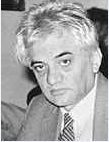Case Report
Inflammation Bowel Diseases and Tuberculosis Infection
1Department of medical, Inonu University Internal Medicine Assistant, Turkey.
2Department of Gastroenterology, Inonu University Gastroenterology, Turkey.
3Department of medical, Hospital Emergency Medicine Doctor, Turkey.
*Corresponding Author: Elanaz Alizade,Department of medical, Inonu University Internal Medicine Assistant, Turkey.
Citation: Alizade E, Yasir F. Cagin, Alizade A. (2025). Drug Inflammation Bowel Diseases and Tuberculosis Infection, International Journal of Medical Case Reports and Reviews, BioRes Scientia Publishers. 5(2):1-4. DOI: 10.59657/2837-8172.brs.25.076
Copyright: © 2025 Elanaz Alizade, this is an open-access article distributed under the terms of the Creative Commons Attribution License, which permits unrestricted use, distribution, and reproduction in any medium, provided the original author and source are credited.
Received: January 22, 2025 | Accepted: February 20, 2025 | Published: February 22, 2025
Abstract
Crohn's disease is a complex, chronic inflammatory gastrointestinal condition that varies in age of onset, disease location, and behavior. Differentiating between intestinal tuberculosis (ITB) and Crohn’s disease may be challenging in those who have lived in endemic areas as clinical features may be similar. If the patient is initiated with IBD treatment instead of ITB, it may cause a wording of the patient's clinic conditions due to immune suppressive treatment, such as corticosteroids and anti-tumor necrosis factors. A 31-year-old male patient applied to the policy clinic with bloody diarrhea and weight loss. Our case is a male patient who was followed up due to Crohn's disease. Since his disease could not be controlled despite the treatments given, immunosuppressive treatments were started. Due to the reasons explained, unfortunately he passed away.
Keywords: inflammatory bowel diseases; intestinal tuberculosis
Introduction
Inflammatory Bowel Diseases (IBD), including Crohn's disease (CD) and ulcerative colitis, are chronic inflammatory conditions due to a variable breakdown reaction [1]. Ulcerative colitis (UC) is a chronic inflammatory disease characterized by mucosal inflammation that begins distal to the rectum and continues for a variable distance proximally, there is often a sharp boundary between inflamed and non-inflamed mucosa. Typically, patients with UC experience periods of relapse and remission. Crohn's disease is a complex, chronic inflammatory gastrointestinal condition that varies in age of onset, disease location, and behavior. Intermittent attacks of the disease, ileal involvement and granulomatous inflammation are more suggestive of Crohn's disease, as is the tendency to inflammation in the proximal colon [2]. In 5–15% of IBD patients, endoscopic and histological assessments cannot distinguish between Crohn’s colitis and UC, and these patients are labelled as IBD-unclassified (IBD-U).
Differentiating between intestinal tuberculosis (ITB) and Crohn’s disease may be challenging in those who have lived in endemic areas as clinical features may be similar. Features suggestive of a diagnosis of intestinal TB include night sweats, concomitant pulmonary tuberculosis, positive tuberculin skin test, antibodies to TB, abdominal lymphadenopathy, ascites AND transverse ulcers [2]. The frequency of extrapulmonary tuberculosis is firstly the lymph node, then the genitourinary system, and the third intestinal system. The difference between IBD and ITB needs to be understood in terms of treatment. If the patient is initiated with IBD treatment instead of ITB, it may cause a worsing of the patient's clinic conditions due to immune suppressive treatment, such as corticosteroids and anti-tumor necrosis factors (1).
Case Report
In 2010, a 31-year-old male patient applied to the policy clinic with bloody diarrhea and weight loss. His complaints first started at the age of 26. The patient's first colonoscopy was considered in favor of ulcerative colitis. Mesalamine and enema were started and he was called for control after 15 days. The patient, who came for control 15 days later, stated that his diarrhea continued. The patient's treatment dosage was increased and he was called for a re-control. pathology report received from the patient, chronic (active) diffuse colitis, Low grade dysplasia concluded. The patient who came to show the biopsy results and re-control, stated that his complaints had not decreased. Corticosteroid treatment was started. After corticosteroid treatment started, the patient’s complaints decreased. He had regular colonoscopy and biopsy taken during this process. He received the same treatment for 10 years. Even if it was recommended to discontinue corticosteroid, continued with his own will. The patient did not apply for check-ups for more than 10 years. After reducing the corticosteroid dosage, the patient applied with the complaint of defecation 15-18 times a day and lost 20kg in 4 months.
The patient was started on Infliximab, Azathioprine along with mesalamine. He received 4 doses of infliximab. His diarrhea continued 7-8 times a day. In 2021, the IGST test taken from the patient was positive. His tuberculosis treatment has started. Biopsy result taken during colonoscopy Diffuse active colitis concluded. İn 2023, the patient's colonoscopy: linear large ulcer and fistula orifice were observed. lead pipe deformity developed. Ileocecal valve was observed to be ulcered and deformed (Crohn). After his colonoscopy in 2023, he was admitted to the hospital due to fever. He had left inguinal pain for about 2 months. Thrombosis was not detected as a doppler result. MRI was performed on the patient and ıt resulted in iliopsoas abscess. The abscess was drained by the general surgery and the result of the abscess culture was explained as tuberculosis. Anti tuberculosis treatment has started. The patient was transferred to intensive care due to tachycardia and low saturation. The patient, who was followed in the ICU, was suddenly intubated due to cardiopulmonary arrest and was returned after 35 minutes of CPR. He was followed as intubed. After 7 days, massive bloody diarrhea started. PPI infusion and somatostatin infusion was started to the patient. After 13 days, the patient died in the ICU, despite of all the interventions.
Conclusion
Due to the similarities between CD and gastrointestinal TB (GITB) It can be difficult to distinguish between the two diseases:
1-There are significant similarities in the clinical, radiological, endoscopic, surgical, and histological features of CD and gitB (which typically occurs in the ileocecal region).
2- CD and giTB are both granulomatous conditions that can involve any part of the gastrointestinal tract.
3- There is no simple test that can be used to reliably distinguish CD from get [6].
Patients with IBD frequently develop serious infections resulting from the disease itself or its treatment [3]. Although some patients may be asymptomatic, common symptoms of Gastrointestinal (GI) tuberculosis (TB) are fever, anorexia, weight loss, nausea/vomiting, abdominal pain, diarrhea, and sometimes constipation. Hematemesis and melena are uncommon. On physical examination, signs such as abdominal distension, ascites, hepatomegaly, splenomegaly, rectal bleeding may be detected depending on the involved area of GI tract [4].
10% of people infected with tuberculosis develop active tuberculosis, and the remaining 90% have latent tuberculosis infection (LTBI); This infection does not require treatment because tuberculosis bacteria are present in the body but their activity is suppressed and there are no symptoms or contagiousness [5]. Latent tuberculosis (TB) infections (LTBI) pose clinical challenges for the diagnosis and treatment of inflammatory bowel disease (IBD)especially in TB-endemic areas. While steroids and biologics are becoming increasingly useful in treating patients with moderate to severe IBD, the risk of developing reactivation or TB increases due to their strong immunosuppressive effects [5]. Tumor necrosis factor-alpha inhibition can lead to activation of latent TB infection, and most cases present as more severe forms of disseminated TB [5].
Discussion
İn 2010,31-year-old male patient applied to the polyclinic wıth bloody diarrhea and weight loss. His complaints first started when he was 26 years old. The patient's first colonoscopy was considered in favor of ulcerative colitis.
Lab
ANTİ HBS(MIKRO) Negatif IU/Ml, ANTİ HIV(MACRO) Negatif, ANTİ HCV(MACRO) Negatif, ANTİ HBC TOTAL(MACRO) Negatif, HBSAG(MACRO) Negatif,
Total Bılırubın 0,2 mg/dL
Direct Bılırubın 0,2 mg/dL
AST 15 U/L
ALT 19 U/L
ALP 62 U/L
GGT 30 U/L
LDH 146 U/L
HGB 6,2 g/dL
HCT 21,2 %
PLT 713 10^3/ML
Sedimentation 120 mm/H
PTZ - INR 1,2
APTT 26,8 sn
CMV PCR NEGATİF
İGST NEGATİF
The patient did not apply for check-ups for more than 10 years.
The patient was on mesalamine and enema + corticosteroid started.After 10 years of treatment the patient was started on Infliximab, Azathioprine along with Mesalamin. He received 4 doses of ınfliximab.
In 2021, the IGST test taken from the patient was positive. His tuberculosıs treatment has started.
Lab
CRP 2,25 mg/Dl
albumin 3,6 g/dL
Total Bilirubin 0,3 mg/dL
Direct Bilirubin 0,07
AST 34 IU/L
ALT 35 IU/L
ALP 184 IU/L
GGT 187 IU/L
LDH 163
HGB 12 g/dL
HCT 41,1 %
CMV PCR NEGATİF
IN 2022, the IGST test taken from the patient was negatif.
Lab
CRP 3,33 mg/dL
Albumin 3,8 g/dL
Total Bilirubin 0,3 mg/dL
Direct Bilirubin 0,04 mg/dL
AST 22 U/L
ALT 20 U/L
ALP 72 U/L
GGT 24 IU/L
LDH 136 U/L
HGB 11,6 g/dL
HCT 38 %
Sedimentation 26 mm/H
İn 2023, he had left inguinal pain for about 2 months. Thrombosis was not detected as a doppler result. MRI was performed on the patient and it resulted in iliopsoas abscess. The abscess was drained by the general surgery and the result of the abscess culture was explained as tuberculosis. Anti tuberculosis treatment has started.
Lab
Albumin 2,7 g/dL
Total Bilirubin 0,31 mg/dL
Direct Bilirubin 0,07 mg/dL
AST 18 U/L
ALT 14 U/L
ALP 76 U/L
GGT 78 IU/L
LDH 212 U/L
AMİLAZ 90 U/L
LİPAZ 41,9 U/L
HGB 7.60 g/dL
HCT 22.90 %
PTZ - INR 1,29
PTZ - sn 15,3 sn
CRP 11,5
TBC PCR NEGATİF
CMV PCR NEGATİF
Clostridium difficile NEGATİF
The cause of the patient's fırst cardiopulmonary arrest was not understood.
very resıstant Klebsıella Pneumonıae was grown ın the blood culture of the patıent who continued to be Icutated.
The patient is considered to exits due to sepsis.
Declarations
Ethical approval
Not applicable
Funding and author contributions to the article
Not applicable
Conflict of interest
The authors declare that there is no conflict of interest.
References
- Castellotti P, Riccardi N, Ferrarese M, Canetti D, Fanti D, Forti E, Reda M, Alexiadis S, Bonoldi E, Saporiti M, Perno CF, Ruffo Codecasa L. Intestinal tuberculosis versus Inflammatory Bowel Diseases: a never-ending challenge. New Microbiol.
Publisher | Google Scholor - Lamb CA, Kennedy NA, Raine T, Hendy PA, Smith PJ, Limdi JK, Hayee B, Lomer MCE, Parkes GC, Selinger C, Barrett KJ, Davies RJ, Bennett C, Gittens S, Dunlop MG, Faiz O, Fraser A, Garrick V, Johnston PD, Parkes M, Sanderson J, Terry H; IBD guidelines eDelphi consensus group; Gaya DR, Iqbal TH, Taylor SA, Smith M, Brookes M, Hansen R, Hawthorne AB. British Society of Gastroenterology consensus guidelines on the management of inflammatory bowel disease in adults. Gut.
Publisher | Google Scholor - Beaugerie L, Rahier JF, Kirchgesner J. Predicting, Preventing, and Managing Treatment-Related Complications in Patients with Inflammatory Bowel Diseases. Clin Gastroenterol Hepatol.
Publisher | Google Scholor - Eraksoy H. Gastrointestinal and Abdominal Tuberculosis. Gastroenterol Clin North Am.
Publisher | Google Scholor - Jin BC, Moon HJ, Kim SW. [Latent and Active Tuberculosis Infection in Patients with Inflammatory Bowel Disease]. Korean J Gastroenterol.
Publisher | Google Scholor - Banerjee R, Ali RAR, Wei SC, Adsul S. Biologics for the Management of Inflammatory Bowel Disease: A Review in Tuberculosis-Endemic Countries. Gut Liver.
Publisher | Google Scholor














